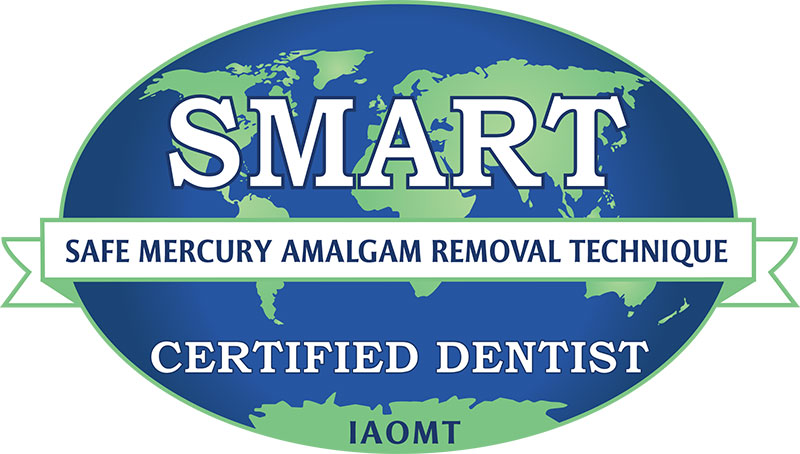The adverse biological impact of Neuralgia-Inducing Cavitational Osteonecrosis (NICO) on the immune system and wellbeing (by Dr. Nico Kamosi)
What is a Cavitation?
Jaw cavitation, cavitational osteonecrosis, fatty-degenerative osteo-necrosis of the jaw (FDOJ), “idiopathic “aseptic ischemic osteonecrosis in the jawbone” (AIOJ) and “avascular bone necrosis” refer to an often-undetectable silent inflammation and destruction of the jaw bone. Such lesion may manifest itself as non-specific atypical facial pain.
What is the cause of the cavitation or FDOJ?
Most of the cavitations or FDOJ case are correlated to dental arch trauma, improper dental procedures e.g., traumatic extraction, chronic infection or inadequate wisdom teeth extraction protocol.
What is the most appropriate treatment procedures for cavitation or FDOJ?
Treatment of NICO involves cleaning out the lesion, possibly using a laser, and supporting the immune system.
This pathological void with the bone structure is the result of inadequate healing or regeneration of the bone tissues in the post-extraction site leading to osteo-necrosis in some cases caused by persisting remnant of the periodontal ligament in post-extraction site which acts as an inhibitory biological barrier for bone replacement.
Other factors may include jaw injuries, compromised localised or periferal vascular perfusion (avascular necrosis) to the affected region, high doses of corticosteroids, calcium or vitamin D deficiencies, osteomalacia, anaemia, reduced immune function, epinephrine-induced vasoconstriction following administration of the local anaesthesia.
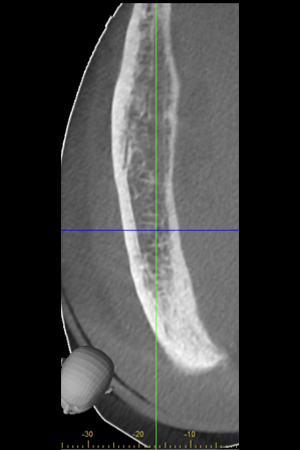
See the 3D top axial view. Radiolucent lesions
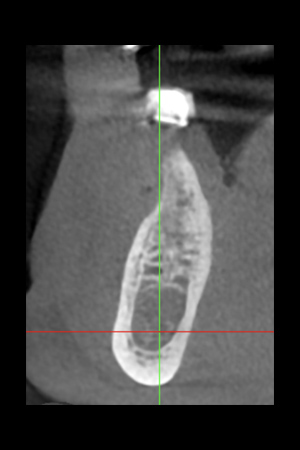
See the frontal view below, the radiolucent lesions
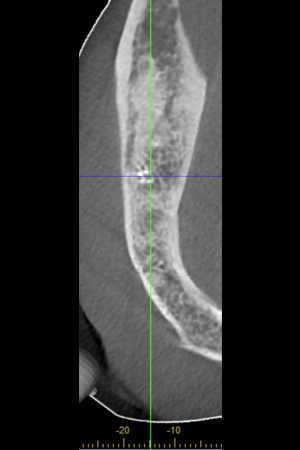
See the top axiel view radiopaque lesion
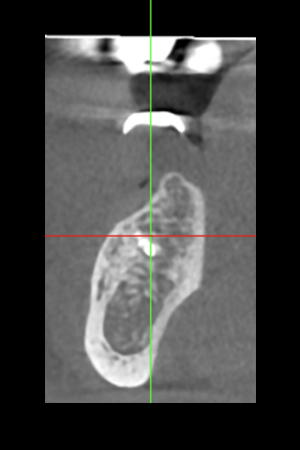
See the 3D frontal view below the radiopaque lesions
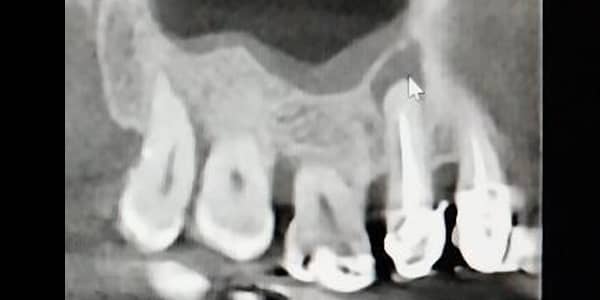
See the 2D-radiograph above – Peri-apical Granuloma caused by inadequate leaking root canal treatment

See the above Sagittal 3D views of the same patient the radiolucent view below the lesion
How to diagnose cavitations of the jaw?
Diagnosis of the NICO is challenging due to the lesion’s invisibility in typical X-rays and its frequent asymptomatic nature. However, the following diagnostic procedures are undertaken to detect the presence of fatty-degenerative osteo-necrosis of the jaw.
Digital volume tomography (DVT), or Cone Beam Computer Tomography (CBCT) is a high-resolution three-dimensional imaging technique may depict a “phantom root image”. On the other hand, the 2D radiographic features leads to a clinical oversight.
Cavitat Transalveolar Ultrasound Scanner (Cavitau®) to assess the osseous integrity within jaws

Histopathological examination:
surgical explorative surgery, direct biopsy and histopathological examination may manifest cellular-level alterations, focal necrosis, dystrophic calcification, lipomatous oedema, and persistent inflammatory processes. The material obtained could also be examined for other diseases or heavy metal poisoning.
Intra-surgical observations present with large areas of soft and greasy inflamed yellowish to brownish on the outside and has a shiny, fatty mass on the inside containing fat cells, which form inflammatory messengers spreading quickly throughout the body exerting adverse biological impact sand cause disease patterns, especially in stressed, vulnerable and immunocompromised individuals, and other minerals, and thus insufficient cell growth, which is important for the healing process of bones.
PCR DNA of bacteria:
Polymerase chain reaction for postsurgical bacterial DNA analysis. Genetic testing provides the microbial profiles of bacterial strains within the cavitation, their exo-toxic by-products, predicting associated pathologies emerged from their co-existence.
Blood screening:
To assess the coherent overexpression of blood levels of Lymphocytes-induced cytokines RANTES/CCL5 (R/C) expression in the AIOJ samples; which (Rantes value) could be raised up to 25 times.
Why should be treat the FDOJ or Cavitations of the jaws?
Cavitation treatment can eliminate the corresponding systemic afflictions including:
- Chronic sinusitis
- Facial neuralgia
- Headaches
- Phantom toothache pain
- Migraines
- Trigeminal neuralgia manifested as a recurrent sudden and violent attack of pain in the face, forehead, eyes, chin, upper and lower jaw via three Trigeminal branches.
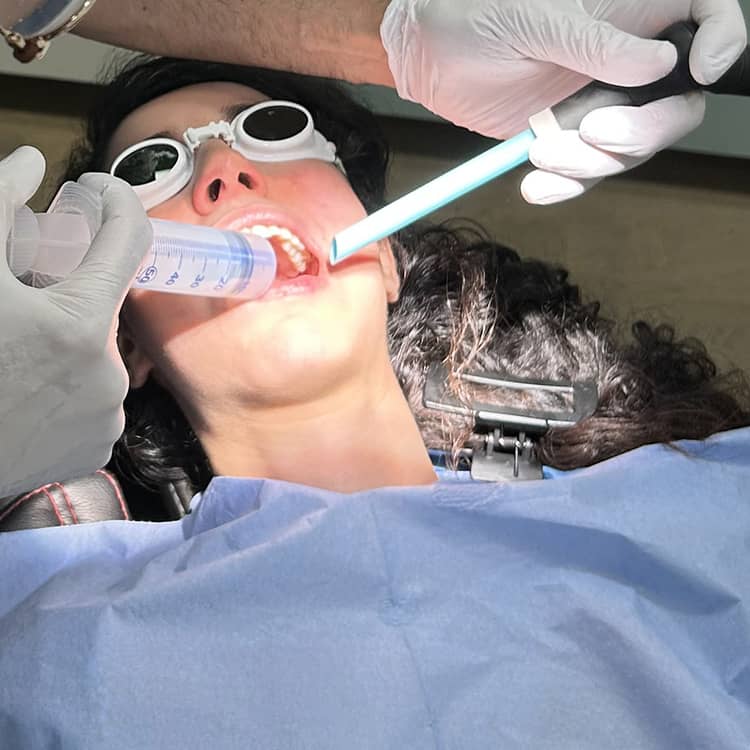
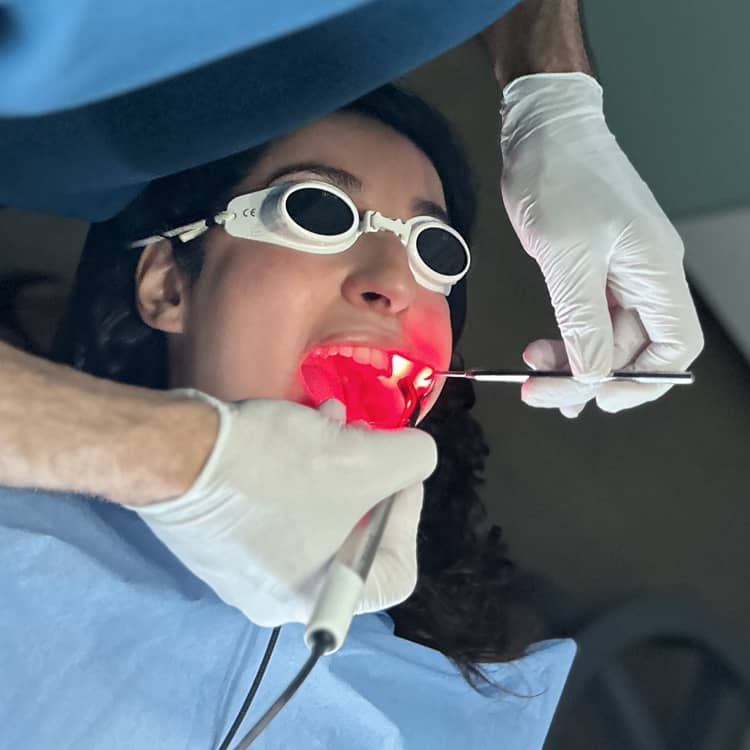
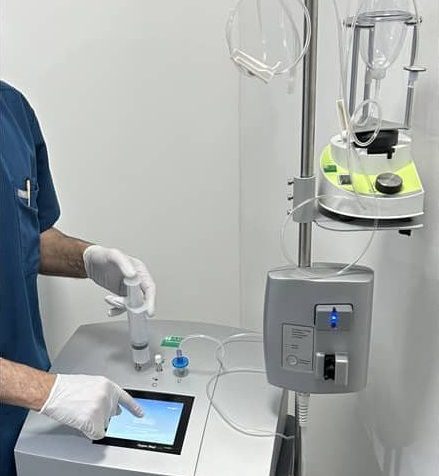
What could be the systemic impacts of the bony Cavitation of Jaw?
Based on the sound research the bacterial by-products may implicate in systemic health concerns including gastrointestinal disturbances, malaise, and other persistent health afflictions.
This could also cause obstruction of the body’s bioenergetic pathways leading to local interference fields which trigger constant stimuli to the entire body as including the immune system, hence chronic fatigue syndrome and compromised systemic homeostasis.
The oral cavity energetic interference field could lead to more than 60% of all chronic illnesses; including autoimmune diseases such as multiple sclerosis or Hashimoto’s disease, but also migraines, joint, back and limb pain and the development of cancer and other tumours. Decomposition of the jawbone leads to irritation and irradiation of the facial nerves hence trigeminal neuralgia.
What is the treatment of bony Cavitation of Jaw?
The treatment of Cavitation, FDOJ or AIOJ require complex strategic clinical protocol requiring mechanical and chemical debridement, local ozone disinfection, laser treatment, strengthening the immune system using systemic ozone therapy, possible application of autologous fibrin clot scaffold, and strenuous aftercare.
If you need further information and oral investigation, please arrange for an appointment to consult with our specialist Dr Nico Kamosi.

